What is the built-in vacuum cleaner - a detailed description and mounting instructions of 2 stages
Table of contents
-
1 Distinctions central vacuum
- 1.1 The device and principle of operation
-
2 Mounting of vacuum cleaner built-
- 2.1 Step 1: preparation of tools and accessories
- 2.2 Step 2: Installation of equipment
- 3 conclusion
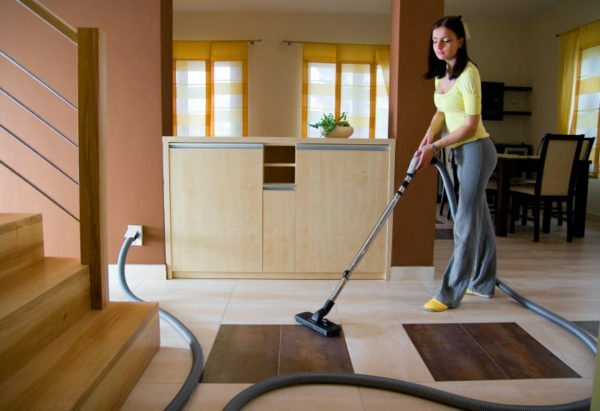
House has central vacuum cleaner makes life easier for housewives.
You are not satisfied with the high level of noise and poor quality of cleaning with a conventional portable vacuum cleaner? Quickly and effectively help solve the problem with a built-in vacuum inlets. I will describe the principle of operation and features of this device, as well as tell you how it is possible to install in your home.
Distinctions central vacuum
Built-in vacuum cleaner - a stationary vacuum system with a powerful motor and branched network of air channels. This system has a central unit, and is designed for daily cleaning of fine household dust and dust in private homes and residential apartments:
- The power unit and the receiver are set to waste in a separate non-residential premises with good sound insulation;
- Collected garbage from every room is made of vacuum line, due to the strong force air into the vacuum system;
- Exhaust exhaust air from unfiltered dust particles discharged into the atmosphere outside the house.
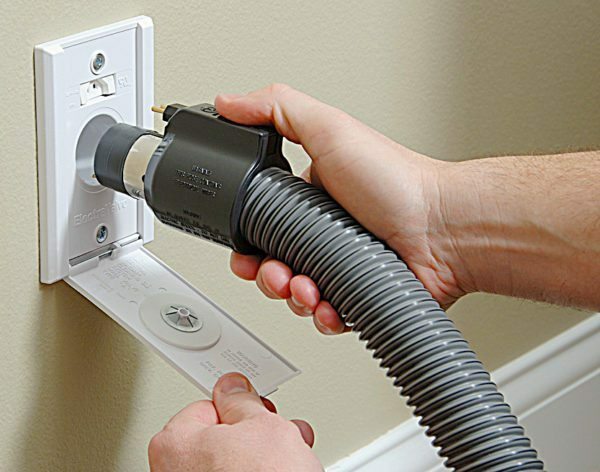
To connect the hose to the wall inlet is used a special connector.
I propose to assess the positive and negative sides of the central vacuum cleaner, compared with portable models:
| Benefits | disadvantages |
|
|
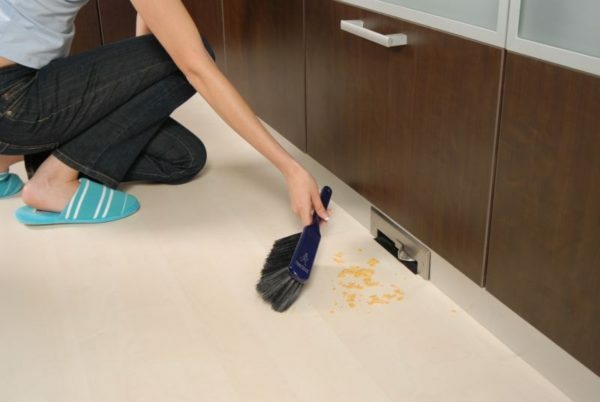
Pnevmosovki often inserted directly into the kitchen furniture.
The device and principle of operation
central vacuum system has a simple device and consists of several elements. Below I will discuss in detail how this works:
- power unit - is intended to create a negative pressure air in the pneumatic system:
- Consists of an electric power of 1.6 to 4 kW, and the centrifugal suction fan in a metal closed housing;
- Installed in domestic economic block away from the accommodation. In a private house it can be a boiler room or cellar, and in the apartment - storage room or balcony.
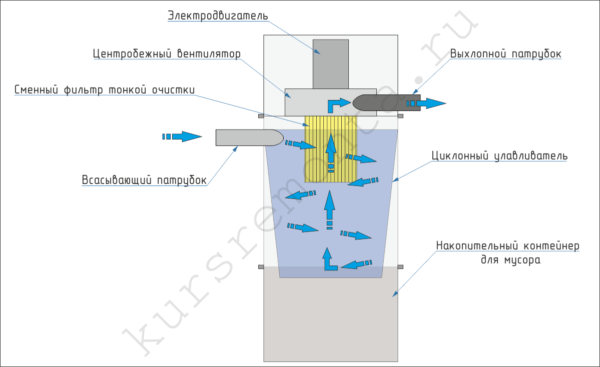
The diagram shows the power unit movement device and the air flow with dust within the filter element.
- The receiving container with a filter element - used for rubbish collection and filtering of exhaust air:
- Set in a single unit together with the power unit;
- The various models of the volume of the receiving container may be from 15 to 200 liters;
- To separate large heavy particles cyclone type cleaners are used;
- To capture the dust or paper tissue used interchangeable filters for fine cleaning of air.
- network of air - designed for the transportation of waste to the receiving container due to the driving force of thin air;
- It is made of plastic pipes with a diameter of 50 to 110 mm;
- To assemble applied for concealed installation in interior walls with plastic sleeves, swivel fittings and other fasteners.
- Wall inlets - are used for joining the corrugated hose to the vacuum of air network:
- Mounted on the walls in different parts of the apartment, in accordance with a preconceived plan;
- Each wall inlet is equipped with a lockable air valve and a limit switch for the motor.
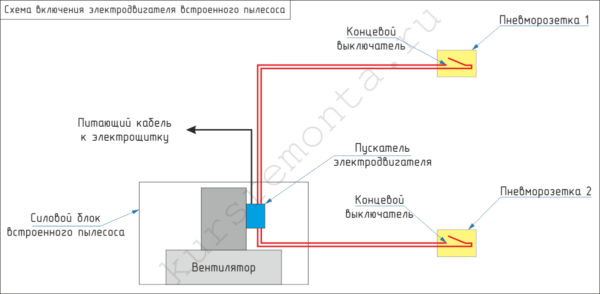
The motor starts automatically after connecting the hose to the wall inlet.
- Sweep - a slit opening with hermetically closing lid connected to vacuum the pipeline system:
- Designed for quick cleaning of debris swept away from the floor;
- Installed at the bottom of the wall beneath the floor, often built into the plinth or basement kitchen furniture.
- accessories - designed specifically for the cleaning of the house:
- The flexible corrugated hose length up to 15 m allows to cover a large area of the room;
- Rigid extension tubes, brushes and interchangeable nozzles for upholstered furniture and various types of flooring.

An exemplary setup of the cleaner built in a three-flat.
All built-in vacuum cleaners have about the same working principle:
- Before cleaning is necessary to choose the nearest wall inlet and open her decorative cover with vent valve;
- The insert hole wall inlet connecting pipe of the corrugated tube;
- The speaker connector on the nozzle closes the contacts of limit switch and starts operation in the power unit;
- After the end of cleaning is necessary to pull pipe and close the cover decorative wall inlets;
- In this embedded vacuum cleaner is disconnected from the network, and the air valve on the lid overlaps pnevmokanal;
- To remove debris from the floor pnevmosovkom need to sweep it with a broom toward the slitted opening, and press the foot pedal for a short run of the suction unit.
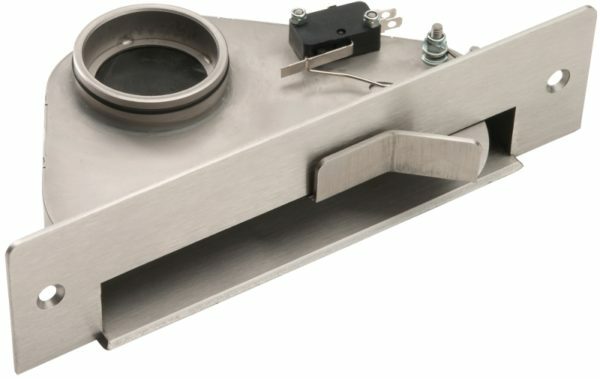
On top of the photo in pnevmosovka seen limit switch for starting the vacuum cleaner.
Some models are equipped with built-in vacuum cleaner motor remote switch, which is located near the handle on the working end of the corrugated hose.
Mounting of vacuum cleaner built-
Step 1: preparation of tools and accessories
The following describes a list of tools and materials needed for installation:
| Illustration | Tools and accessories |
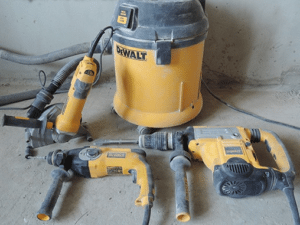 |
Tools for installation:
|
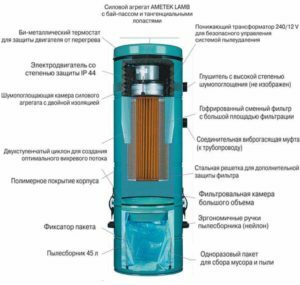 |
Powertrain:
|
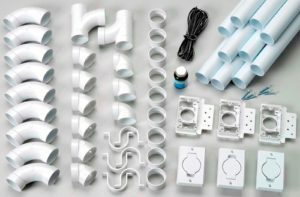 |
of pneumatic system:
|
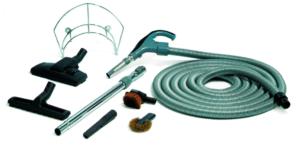 |
Auxiliary components:
|
Step 2: Installation of equipment
Before you install a central vacuum cleaner, it is necessary to choose the right place powertrain location, and well consider laying scheme of pneumatic vacuum lines:
| Illustration | Description of work |
The circuit arrangement:
| |
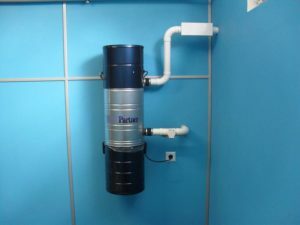 |
Installation of the power unit:
|
 |
Installation of pneumatic:
|
conclusion
Now you understand how easy to use built-in vacuum cleaner, and how it can be to install in your home. I advise you to also view the video in this article, and your suggestions and questions to post in the comments.
